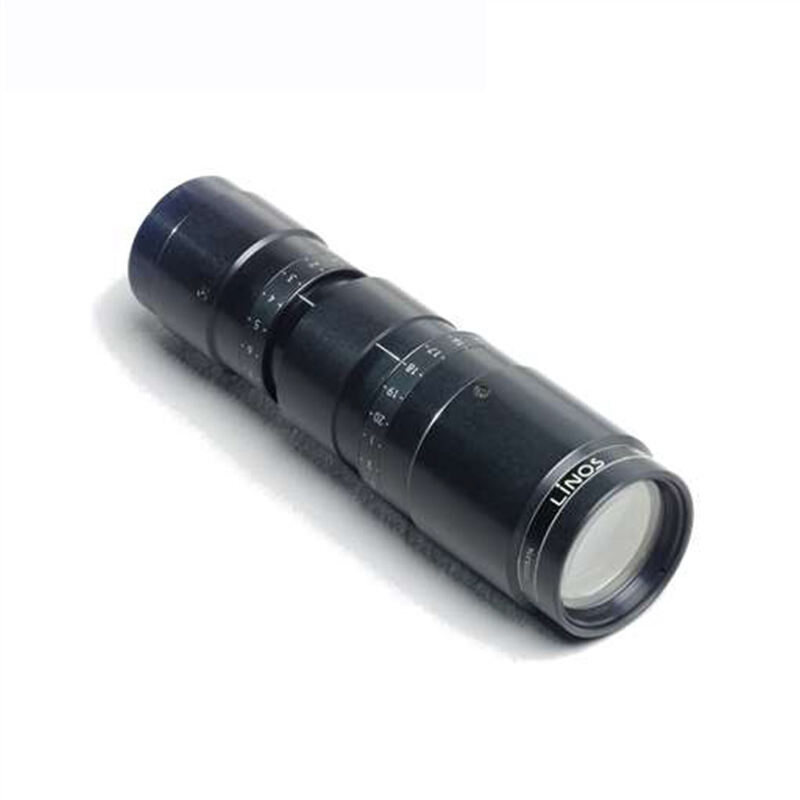Understanding the Critical Role of Beam Expanders in Modern Optics
The optical industry continues to evolve at a rapid pace, and beam expanders have become indispensable components in numerous applications, from laser processing to advanced microscopy. These sophisticated optical devices transform the diameter of a light beam while maintaining its collimation and wavefront quality, making them essential for precision operations across multiple industries.
Whether you're working in industrial manufacturing, scientific research, or advanced telecommunications, selecting the right beam expander can make the difference between mediocre and exceptional results. This comprehensive guide will walk you through the essential considerations, latest technologies, and expert insights to help you make an informed decision for your specific applications.
Core Specifications and Technical Parameters
Magnification and Expansion Ratio
When selecting a beam expander, one of the primary specifications to consider is the magnification ratio. This determines how much the input beam will be enlarged. Modern beam expanders typically offer ratios ranging from 2X to 20X, though specialized models can provide even higher magnifications. The choice depends largely on your application's requirements and the characteristics of your input beam.
It's crucial to understand that higher magnification isn't always better. Each application has its optimal expansion ratio, and exceeding it unnecessarily can lead to increased system complexity and potential wavefront distortions. Consider your space constraints and beam quality requirements when determining the appropriate magnification.
Wavelength Range and Coating Options
The wavelength compatibility of your beam expander is fundamental to its performance. Today's advanced coating technologies enable beam expanders to work efficiently across specific wavelength ranges, from UV to IR. Multi-layer dielectric coatings can provide high transmission rates exceeding 99% at design wavelengths.
When evaluating wavelength specifications, consider not just your primary wavelength but also any potential future applications. Some beam expanders offer broadband capabilities, though these typically come with trade-offs in terms of optimization at specific wavelengths.
Design Configurations and Mechanical Considerations
Fixed vs. Variable Magnification Systems
Fixed magnification beam expanders offer superior stability and typically better wavefront quality, making them ideal for applications requiring consistent performance. They're generally more cost-effective and require less maintenance than their variable counterparts.
Variable magnification systems, while more expensive, provide flexibility for applications where beam size needs to be adjusted. Recent advances in mechanical design have improved the reliability of variable systems, though they still require more careful handling and periodic recalibration.
Mechanical Mounting and Environmental Factors
The mechanical design of a beam expander significantly impacts its long-term performance. Modern mounting systems incorporate thermal compensation features to maintain alignment across temperature variations. Consider the operating environment's temperature range, humidity levels, and potential vibration exposure when selecting mounting options.
For applications in challenging environments, sealed housing designs protect optical surfaces from contamination. Some manufacturers now offer modular mounting systems that simplify integration with existing optical setups while maintaining precise alignment.
Advanced Features and Technology Trends
Smart Integration Capabilities
The latest generation of beam expanders increasingly incorporates smart features such as electronic control interfaces and real-time monitoring capabilities. These advanced systems can automatically adjust to maintain optimal beam characteristics and provide feedback on performance parameters.
Integration with digital control systems allows for automated alignment procedures and remote operation, particularly valuable in high-power laser applications where direct access may be restricted. Consider whether these advanced features justify the additional investment for your specific application.
Emerging Materials and Coating Technologies
Recent developments in optical materials and coating technologies have led to beam expanders with improved damage thresholds and reduced thermal sensitivity. Novel glass compositions and ceramic materials offer enhanced stability under high-power conditions.
Advanced coating techniques, including ion-beam sputtering and atomic layer deposition, provide superior durability and performance consistency. These technologies enable beam expanders to handle higher power densities while maintaining excellent transmission characteristics.
Application-Specific Considerations
Industrial Processing Applications
In industrial laser processing, beam expanders play a crucial role in optimizing beam diameter for specific cutting, welding, or marking applications. High-power handling capability and thermal stability are essential considerations. Modern beam expanders designed for industrial use often feature robust construction and active cooling provisions.
The trend toward automation in manufacturing requires beam expanders that can maintain consistent performance over extended operating periods. Consider models with integrated monitoring capabilities to ensure consistent process quality.
Research and Laboratory Applications
Scientific applications often demand the highest level of beam quality and wavefront preservation. For research environments, factors such as wavefront distortion, transmission uniformity, and positional stability become critical. Modern beam expanders for laboratory use often feature precision adjustment mechanisms and ultra-stable mounting systems.
Consider the flexibility of the system to accommodate different experimental configurations and the ease of integration with other optical components in your setup. Some manufacturers offer modular designs that facilitate quick modifications to experimental arrangements.
Frequently Asked Questions
What factors most significantly impact beam expander performance?
The most critical factors affecting beam expander performance include optical quality of components, mechanical stability of the assembly, environmental conditions (temperature, humidity, vibration), and proper alignment. Additionally, the input beam quality and characteristics must match the design specifications of the beam expander for optimal results.
How often should beam expanders be recalibrated?
The recalibration frequency depends on usage conditions and application requirements. Generally, fixed magnification systems may need recalibration annually, while variable magnification systems might require quarterly checks. However, high-precision applications may need more frequent calibration, especially if operating in challenging environmental conditions.
What are the latest innovations in beam expander technology?
Recent innovations include adaptive optical elements for automatic beam correction, advanced thermal management systems, ultra-broadband coating technologies, and integrated digital control interfaces. Some manufacturers are also developing compact designs with reduced form factors while maintaining high performance specifications.
 EN
EN
 AR
AR
 FR
FR
 DE
DE
 JA
JA
 KO
KO
 RU
RU
 ES
ES


